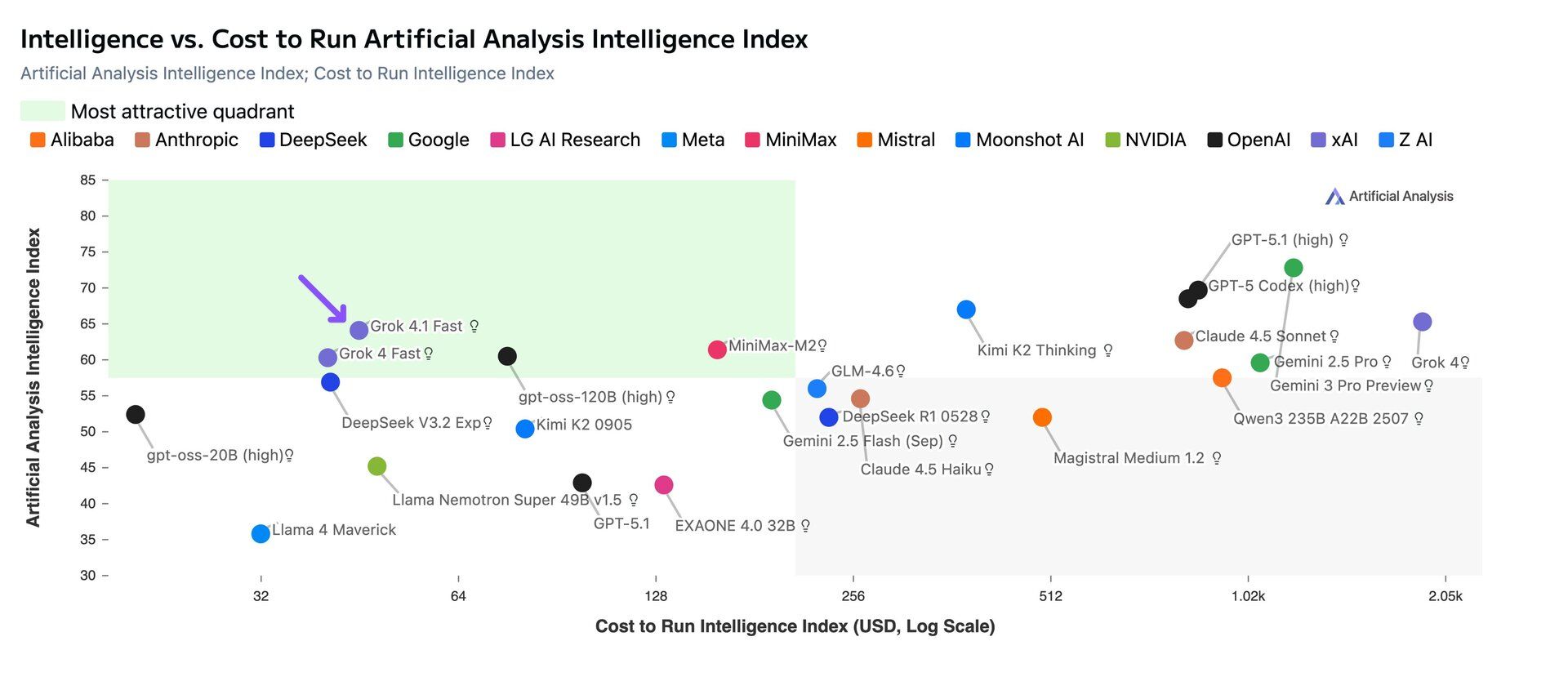- Horizon AI
- Posts
- These are the Most Cost-Effective LLMs Today 🌐
These are the Most Cost-Effective LLMs Today 🌐
OpenAI Taps iPhone-Assembler Foxconn to Build America's AI Hardware Backbone

Welcome to another edition of Horizon AI,
OpenAI and Foxconn announced a partnership to co-design and accelerate U.S.-based manufacturing of next-generation AI infrastructure hardware, signaling a major push to secure the AI supply chain.
Let’s jump right in!
Read Time: 4.5’ min
Here's what's new today in the Horizon AI
Chart of the week: How AI Models Compare in Cost and Performance
OpenAI Taps iPhone-Assembler Foxconn to Build America's AI Hardware Backbone
AI Findings/Resources
AI tools to check out
Video of the week
TOGETHER WITH NEURONS
Make Every Platform Work for Your Ads
Marketers waste millions on bad creatives.
You don’t have to.
Neurons AI predicts effectiveness in seconds.
Not days. Not weeks.
Test for recall, attention, impact, and more; before a dollar gets spent.
Brands like Google, Facebook, and Coca-Cola already trust it. Neurons clients saw results like +73% CTR, 2x CVR, and +20% brand awareness.
Chart of the week
How AI Models Compare in Cost and Performance

A quick visual guide for assessing the price-to-performance tradeoff across the current landscape of AI models, showing Grok 4.1 as the most capable version of the model yet, excelling in reasoning, creativity, and accuracy.
AI News
OPENAI
OpenAI Taps iPhone-Assembler Foxconn to Build America's AI Hardware Backbone

In a strategic push to strengthen U.S. AI infrastructure, OpenAI has teamed up with Foxconn, the Taiwanese electronics giant known for assembling iPhones, to co-design and manufacture critical hardware for AI data centres in the United States.
Details:
OpenAI and Foxconn will collaborate on the design and production of key data-centre equipment, including racks, networking, cabling, and power systems, to support large–scale AI operations.
Foxconn will leverage its U.S. manufacturing facilities (including sites in Wisconsin, Ohio, and Texas) to produce these components, helping boost domestic supply-chain resilience.
Under the terms of the arrangement, OpenAI will get "early access" to evaluate the hardware and has an option to purchase, but neither side has committed to spending or volume obligations yet.
The collaboration dovetails with OpenAI's broader infrastructure ambitions: it has publicly committed to building around 30 gigawatts of compute capacity (enough to power roughly 25 million U.S. homes). It is engaging in custom-chip and hardware partnerships (e.g., with Broadcom) to support that scale.
For Foxconn, this move marks a deeper pivot into AI and data centre markets, positioning the company for growth amid booming demand for AI infrastructure.
Strategically, the tie-up helps the U.S. side of the supply chain by bringing manufacturing back stateside, thereby reducing exposure to tariffs and cross-border risks amid heightened tech geopolitics.
AI Findings/Resources
🩺 WebMD launched an AI chatbot for clinical medical support.
⚗ UK’s MIFs are using robotics and AI to conduct autonomous, closed-loop experimentation.
⚖ Court Filings Allege Meta Downplayed Risks to Children and Misled the Public
AI Tools to check out
🎙 ReadMeeting: Captures screen and audio, and summarizes your meetings in real time.
🔖 Bookmarkjar: AI-powered bookmark manager for everything you save.
📑 Side Space: AI Assistant for researching, summarizing, and organizing your Tabs.
👑 Apex Echo AI: Dominate AI Search Results with Answer Engine Optimization
📺 Textable: Generate loveable teletext of a full channel with a single prompt
Video of the week
AI: The Revolution You're Not Seeing
The current perception of AI, even as simple chatbots and image generators, is merely the "tiniest tip of a massive world-changing iceberg". AI is not just a new technology, but a discovery comparable to fire or electricity, with the potential to be the most profound invention in human history.
The true revolution is happening in science, where AI is accelerating discovery from "human speed" to "machine speed". In medicine, AI is transitioning biology from observation to engineering.
A key example is AI solving the decades-old protein folding problem, which is now leading to the creation of new drugs and enzymes that can degrade plastic. Drugs designed by AI are achieving a much higher success rate in early clinical trials (around 85%) than traditionally developed drugs (around 55%).
That’s a wrap!
We'd love to hear your thoughts on today's email!Your feedback helps us improve our content |
Not subscribed yet? Sign up here and send it to a colleague or friend!
See you in our next edition!
Gina 👩🏻💻

